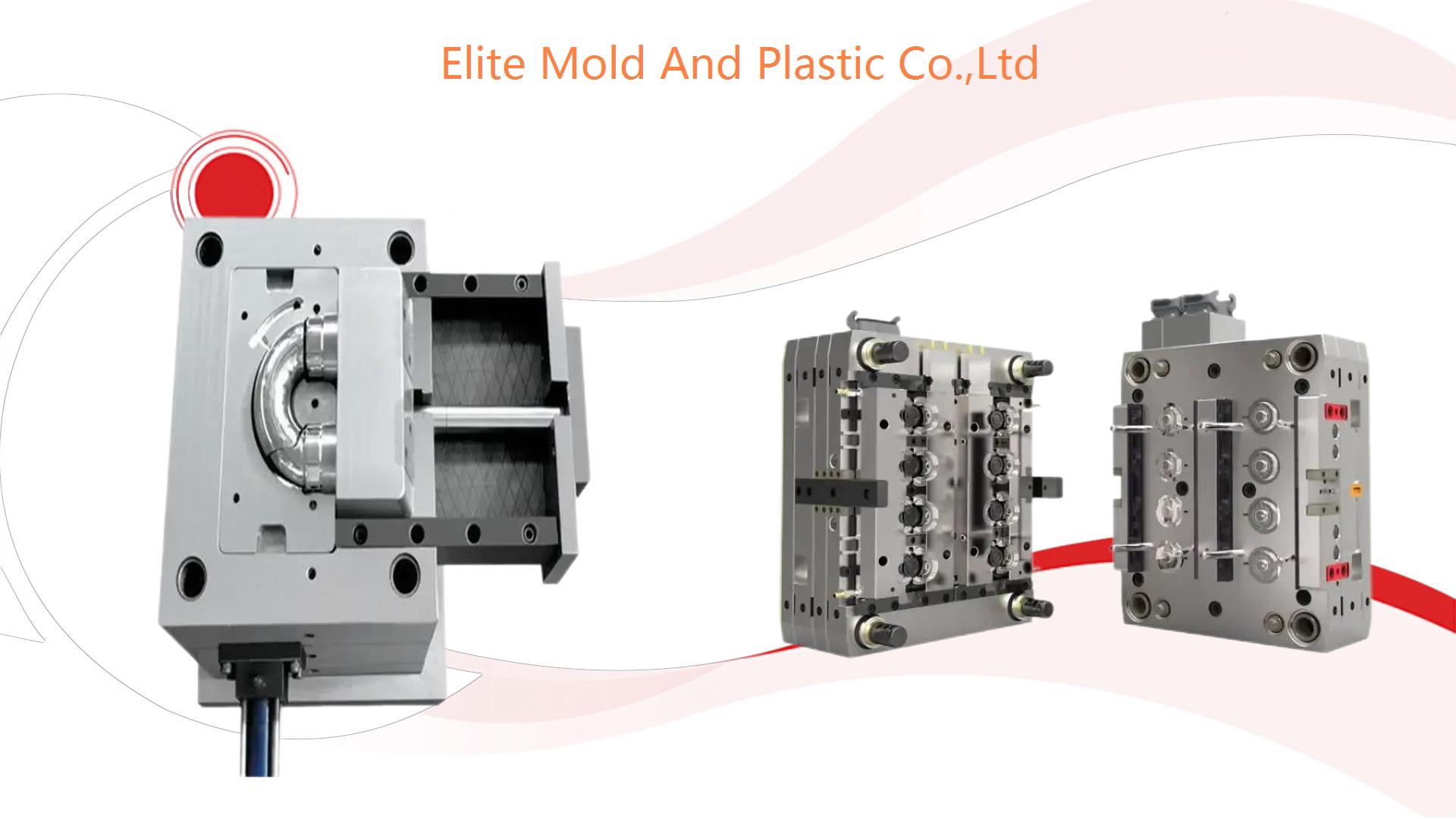The Importance of Optimizing the Injection Molding Cycle for Efficiency and Cost Saving
As a leading plastic injection mold manufacturer in China, Elite is committed to delivering high-quality injection molded parts at competitive prices. One of the most important factors in achieving this is optimizing the injection molding cycle for maximum efficiency. The injection molding cycle refers to the entire process from closing the mold to ejecting the finished part. By optimizing this cycle, manufacturers can reduce production costs, improve productivity, and enhance overall part quality. In this article, we will discuss the importance of optimizing the injection molding cycle and the benefits it offers in terms of efficiency and cost savings.
What is the Injection Molding Cycle?
The injection molding cycle consists of several key stages, each of which plays a crucial role in the production process. These stages include:
- Mold Clamping: The mold closes tightly to prepare for injection.
- Injection: Molten plastic is injected into the mold cavity.
- Cooling: The plastic solidifies as it cools inside the mold.
- Ejection: The mold opens, and the finished part is ejected.
- Reset: The mold resets for the next cycle.
Each of these stages needs to be carefully controlled to maximize efficiency and ensure high-quality results. Any delays or inefficiencies in the cycle can increase production time and costs.

Why Optimizing the Injection Molding Cycle is Crucial
Optimizing the injection molding cycle offers numerous advantages that help businesses stay competitive. From reducing production costs to improving part quality, here’s why optimizing the cycle is essential:
1. Increased Productivity
By optimizing the injection molding cycle, manufacturers can produce more parts in less time, leading to increased output and higher overall productivity.
- Reduced Cycle Time: Each cycle contributes to the overall production time. A shorter cycle time means more parts can be produced in the same amount of time, which boosts efficiency.
- Faster Production Rates: With a faster cycle time, manufacturers can meet higher production demands without compromising quality.
At Elite, we focus on reducing cycle times without sacrificing product integrity, ensuring that clients receive high volumes of parts quickly and efficiently.
2. Lower Production Costs
Optimizing the cycle can help minimize material waste, reduce energy consumption, and lower labor costs, all of which contribute to significant cost savings.
- Material Efficiency: By fine-tuning the injection process, we can ensure that the right amount of material is used for each part, reducing excess waste and lowering raw material costs.
- Energy Savings: Shorter cycle times result in less energy consumption, as the machines spend less time running. This contributes to overall cost reductions and a more sustainable production process.
At Elite, we help clients achieve cost-effective production by carefully optimizing the cycle for minimal material waste and energy consumption.
3. Improved Part Quality
An optimized injection molding cycle helps prevent defects such as warping, shrinkage, and sink marks, leading to consistently high-quality parts.
- Consistent Cooling: One of the most critical factors in the cycle is the cooling time. Proper cooling ensures that parts solidify evenly, reducing the risk of defects and improving dimensional accuracy.
- Balanced Injection: Optimizing the injection speed and pressure ensures that molten plastic flows smoothly into the mold, avoiding issues such as short shots, flow lines, and air entrapment.
At Elite, we use state-of-the-art equipment and advanced process control to optimize every stage of the cycle, ensuring that every part meets the highest quality standards.
4. Minimized Downtime
Reducing cycle times and optimizing the process can help minimize machine downtime and maintenance requirements. This leads to uninterrupted production and fewer delays.
- Reduced Wear on Machines: By optimizing machine settings and cycle parameters, the risk of excessive wear on molds and machines is reduced, leading to fewer breakdowns and less downtime for repairs.
- Higher Efficiency: With fewer interruptions and delays, production lines can operate smoothly, increasing overall efficiency.
Elite takes a proactive approach to machine maintenance and cycle optimization, ensuring that equipment runs efficiently and minimizing costly downtimes.
Key Factors in Optimizing the Injection Molding Cycle
To achieve the benefits of an optimized injection molding cycle, it is essential to focus on several key factors:
1. Injection Speed and Pressure
Injection speed and pressure must be precisely controlled to ensure smooth and consistent material flow into the mold cavity.
- Speed Optimization: If the injection speed is too fast, it can cause flow lines or air traps. Conversely, if it’s too slow, it can lead to incomplete parts (short shots). The ideal speed strikes a balance, filling the mold properly while maintaining part quality.
- Pressure Control: Proper pressure ensures that the material is compacted evenly inside the mold, which helps prevent voids, sink marks, and other defects.
At Elite, we carefully adjust injection speed and pressure to optimize the cycle and ensure high-quality results.
2. Cooling Time
Cooling time is one of the longest stages in the injection molding cycle, and optimizing this phase is crucial for reducing cycle time without compromising part quality.
- Uniform Cooling: Uneven cooling can lead to warping and shrinkage. It’s essential to have an optimized cooling system within the mold that ensures uniform temperature distribution throughout the part.
- Reduced Cooling Time: While it’s important to allow enough time for the part to solidify, excess cooling time can unnecessarily prolong the cycle. Fine-tuning the cooling process helps reduce overall cycle time while maintaining part quality.
Elite employs advanced cooling systems that allow for faster, more efficient cooling without sacrificing the precision of the molded parts.
3. Ejection Time
The time taken to eject the finished part from the mold can also be optimized to speed up the overall cycle.
- Automated Ejection: Automated ejection systems can help speed up the removal of parts from the mold, reducing cycle time and preventing damage to the parts during ejection.
- Careful Ejection: It’s important to ensure that the part is fully solidified before ejection to avoid deformation or warping. A balanced approach to ejection time ensures that parts are removed efficiently and intact.
At Elite, we use automated ejection systems to optimize cycle times and ensure parts are ejected without damage.
4. Clamping and Reset Times
The clamping and mold reset stages can also impact overall cycle time. By reducing the time taken for the mold to open, close, and reset for the next cycle, manufacturers can significantly improve efficiency.
- Fast Clamping Systems: High-speed clamping systems reduce the time it takes to secure the mold before injection begins.
- Efficient Mold Reset: Streamlining the mold reset process ensures that there is minimal delay between cycles, further reducing overall production time.
Elite uses advanced equipment with high-speed clamping and reset systems to ensure that each stage of the cycle is completed quickly and efficiently.
How Elite Ensures an Optimized Injection Molding Cycle
At Elite, we use advanced injection molding technology and expert process control to optimize every stage of the production cycle. Here’s how we ensure efficiency and cost savings for our clients:
1. Advanced Equipment
We invest in state-of-the-art injection molding machines that allow for precise control of every aspect of the molding cycle, from injection speed and pressure to cooling time and ejection. Our machines are designed to maximize efficiency and reduce cycle times, leading to cost savings for our clients.
2. Experienced Team
Our team of skilled engineers and technicians has extensive experience in optimizing injection molding cycles for various industries. We work closely with clients to understand their production needs and fine-tune the process to achieve the best possible results.
3. Continuous Improvement
At Elite, we believe in continuous improvement. We regularly review and optimize our processes to stay at the forefront of injection molding technology, ensuring that we deliver top-quality products at competitive prices.
Conclusion
Optimizing the injection molding cycle is essential for improving production efficiency, reducing costs, and maintaining high-quality part output. By focusing on key factors such as injection speed, cooling time, and ejection, manufacturers can achieve shorter cycle times and significant cost savings.
At Elite, we are dedicated to helping our clients maximize efficiency and minimize costs through optimized injection molding processes. With our advanced equipment, experienced team, and commitment to quality, we deliver high-performance solutions that meet your production goals.
Contact Elite today to learn more about how we can help you optimize your injection molding cycle for enhanced efficiency and cost savings!
Related news
Our Certificates
By co-operating with Elite Mold, you have selected one of the most reliable ISO 9001 certified plastic mold manufacturer, Elite Mold as a plastic injection mold manufacturer specializing in plastic injection mold and supplying plastic injection molding services for plastic mold design, prototype makings, mold flow analysis, precise machining, OEM services, ODM services and so on, building custom plastic injection molding. We are committed to enhance the Process optimized and quality of service, shorten lead time and assist in lowering inventory, by providing new products every year to bring in continuous and higher profits for our clients. The ability to produce mold at the International standard, strong engineering and mold design capability, aggressive delivery, competitive pricing and business integrity continues to be the success factor of Elite Mold.










